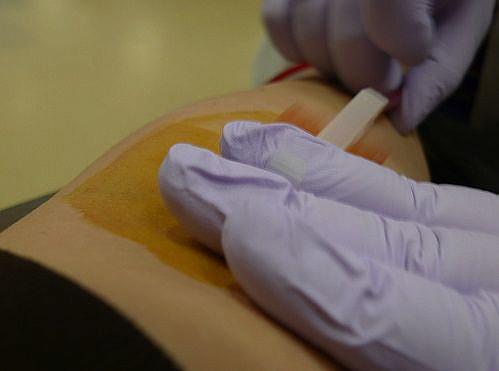New Drug Industry Records Track Sales of Unsafe Blood Products in Foreign Markets

Willful disbelief.
A friend of mine and I were talking this week about how a new piece of information that crosses your path but doesn’t square with your worldview can either be discarded or distorted to fit with the way you want the world to be.
When you read about the case that led to the new collection of files in the Drug Industry Document Archive (DIDA), you may find yourself immediately wanting to disbelieve.
DIDA – housed at the University of San Francisco – just announced the addition of 58 documents that concern Factor VIII or IX Concentrate Blood Products. Here is how Kim Klausner, the Industry Documents Digital Library Manager, describes the case that led to these documents:
Bayer and its Cutter Laboratories manufactured AHF (anti-hemophiliac factor), a blood product used by hemophiliacs to treat uncontrolled bleeding. In the late 1960s the corporation began manufacturing AHF using pools of blood (plasma) from thousands of donors, often recruited from populations at high risk for hepatitis. In the early 1980s Cutter Laboratories realized that its AHF was contaminated with HIV but its financial investment in the product was considered too high to destroy the inventory. Cutter continued to sell the contaminated AHF to markets willing to accept it, including overseas markets in Asia and Latin America, without the recommended precaution of heat treating the product to eliminate the risk. Customers were not informed of the risk and as a consequence, hemophiliacs who infused the HIV-contaminated AHF tested positive for HIV and developed AIDS.
The company continued to sell the contaminated blood products, knowing that people could end up infected with HIV? That’s where your see-no-evil-hear-no-evil mechanism might start to kick in. Which is why these documents are so important. They don’t just help explain what happened in this case, but they also provide a nice window into the inner workings of a company dealing with material that can be both life saving and deadly.
Bayer was sued by patients in the U.S. and Taiwan. The documents in DIDA are related to the marketing of unsafe blood products in Asia. You can see all the documents by going to DIDA and searching for “cs:blood*”.
In a November 1984 memo, a Cutter representative wrote to a blood product distributor in Hong Kong, about using up supplies of the plasma-derived clotting treatment called Koate before switching over to the safer heat-treated version, Koate-HT, which most all U.S. suppliers were getting at this point.
In the long run, it is my plan to convert all the Far East customers over to Koate-HT before the end of the year 1985 and just treat the change over as a product improvement. But we must use up stocks of regular Koate we had made for export. We forecast need for regular Koate because production costs of Koate-HT was expected to be higher and we have several fixed-price contracts.
Yes, we agree Koate-HT should be introduced into Hong Kong this year. It is a safer, better product. If you want to buy some now for private market sales, outside of GSD needs, we can supply at twelve and a half cents a unit.
Walt Bogdanich and Eric Koli at The New York Times were able to track down documents like this in 2003 and wrote a blockbuster piece titled 2 Paths of Bayer Drug in 80's: Riskier One Steered Overseas.
Nearly two decades later, the precise human toll of these marketing decisions is difficult, if not impossible, to document. Many patient records are now unavailable, and because an AIDS test was not developed until later in the epidemic, it is difficult to pinpoint when foreign hemophiliacs were infected with H.I.V. -- before Cutter began selling its safer medicine or afterward.
But in Hong Kong and Taiwan alone, more than 100 hemophiliacs got H.I.V. after using Cutter's old medicine, according to records and interviews. Many have since died. Cutter also continued to sell the older product after February 1984 in Malaysia, Singapore, Indonesia, Japan and Argentina, records show. The Cutter documents, which were produced in connection with lawsuits filed by American hemophiliacs, went largely unnoticed until The Times began asking about them.
''These are the most incriminating internal pharmaceutical industry documents I have ever seen,'' said Dr. Sidney M. Wolfe, who as director of the Public Citizen Health Research Group has been investigating the industry's practices for three decades.
Bayer officials, responding on behalf of Cutter and its president at the time, Jack Ryan, declined to be interviewed but did answer written questions. In a statement, Bayer said that Cutter had ''behaved responsibly, ethically and humanely'' in selling the old product overseas.
Cutter had continued to sell the old medicine, the statement said, because some customers doubted the new drug's effectiveness, and because some countries were slow to approve its sale. The company also said that a shortage of plasma, used to make the medicine, had kept Cutter from manufacturing more of the new product.
What do you believe? Read the documents for yourself and decide.
Image by Thirteen of Clubs via Flickr

